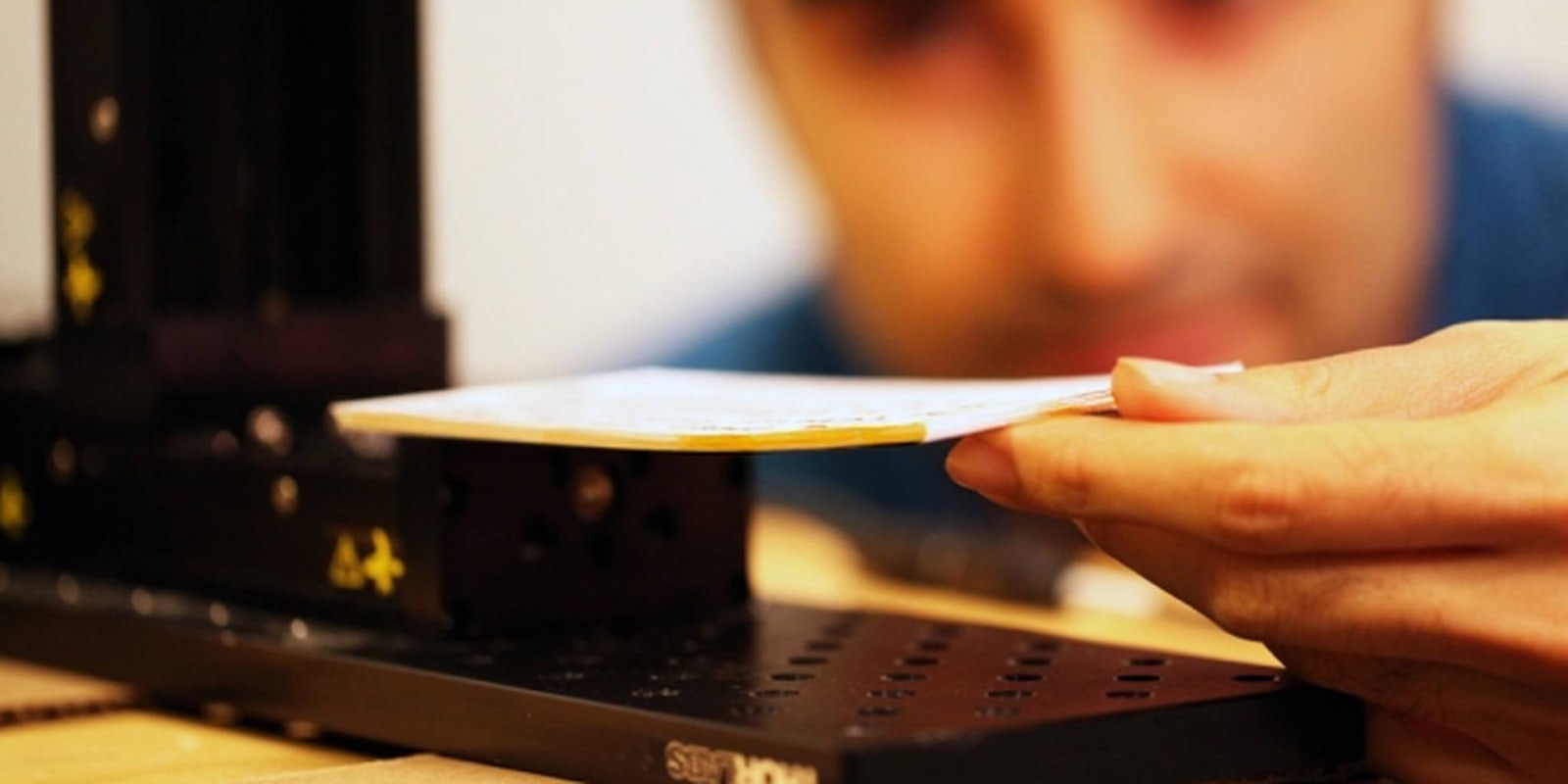Since the invention of the printing press, science has been trying to find more and more efficient ways to make copies of written language. Now we live in a world of lightning fast printers and scanning machines, but if you want to copy a book you’ve still got to open each page to make a reproduction, right? Thanks to researchers at MIT and Georgia Tech even that notion may be a thing of the past.
Utilizing terahertz radiation, MIT and Georgia Tech scientists have been able to develop a system that can detect individual letters from the first nine pages of book without ever opening its cover. In the future researchers could use this method to discover the contents of old manuscripts without physically turning their delicate pages.
According to MIT different chemicals absorb terahertz radiation at different levels, creating a distinctive frequency signature that can be used to differentiate between ink and paper. By exploiting tiny, 20 micrometers deep, pockets of air between pages researchers can send bursts of terahertz radiation via a special camera, through the book. These air pockets reflect the radiation back to the camera, whose sensor then detects where the anomalies caused by the ink on the page is, giving an image of the text.
Of course sometimes the images it shows aren’t perfect, making it hard to read the detected text. To solve this problem MIT researchers developed algorithms that can decipher the distorted or incomplete images of letters on the page. Barmack Heshmat, a research scientist at the MIT Media Lab and corresponding author of the MIT paper on this method is actually a little awed by the power of this algorithm.
In MIT’s official news announcement Heshmat explains, “It’s actually kind of scary. A lot of websites have these letter certifications [captchas] to make sure you’re not a robot, and this algorithm can get through a lot of them.”
While the technology is still in development, this method could allow for massive advances in the field of computational imaging. From scanning old documents to possible uses in the field of archeology, this project may eventually allow us access to documents and places that previously could only be experienced by damaging them. While a few pages doesn’t seem like much, it’s important to remember the original tests they conducted could only read through an envelop, so knows where it’ll end up. Let’s just hope in the meantime no spam sites get their hands on that algorithm.


